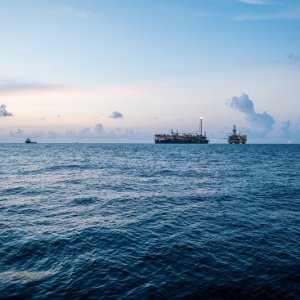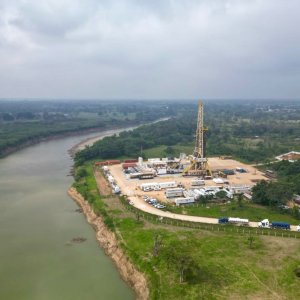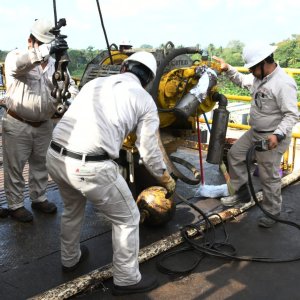
Exploration Successes Fuel Optimism
While Mexico’s onshore fields are mostly mature and deepwater is unchartered territory, shallow waters lie somewhere in the middle. PEMEX and its supply chain both have a reasonable amount of experience developing these types of fields but there is potential yet to be untapped.
For this reason, the number of contracts in shallow water’s licensing rounds and the number of committed wells lay somewhere in the middle of the results of the CNH rounds, with 32 contracts and 33 committed wells, while onshore results showed 50 and 67, and deepwater 28 and 32, respectively. Shallow-water rounds have also caught the attention of 37 companies, mostly IOCs and independents.
ATTRACTIVE TO EXPLORE
Of the 69 shallow-water blocks up for grabs during Rounds 1.1, 1.2, 2.1 and 3.1, 31 were assigned, meaning a 45 percent allocation rate. The extremely low allocation rate of 14 percent in Round 1.1 can be explained by the novelty of the bidding process for both CNH and the bidders, as well as the low oil prices in 2014. After Round 1.1, changes were implemented to make sure that future rounds would be more attractive to all players, and Round 1.2 saw an assignation rate of 60 percent. The figure increased to 66 percent during Round 2.1. Round 3.1 represented a new challenge as more shallow-water blocks with a significant volume of natural gas and associated gas were placed for bids, with an allocation rate of 45 percent.
From the approximately US$161 billion of committed investment Mexico expects to receive in the long term, 14 percent will be allocated to shallow-water activities, accounting for an expected investment of US$23 billion.
The state of Tabasco will receive the biggest cut of this committed investment, with an expected total of US$11 billion. This comes as no surprise considering that 84 percent of the country’s 1P oil reserves and 69 percent of its 1P natural gas reserves are located in the Cuencas del Sureste basin. The attractiveness of Tabasco, according to José Zúñiga, Head of the Energy Commission at COPARMEX Tabasco, favored the entry of smaller companies interested in participating in the licensing rounds. “The federal government’s first licensing round created conditions that allowed smaller companies to participate in the rounds. This created an opening for companies from Tabasco such as Roma Energy and Grupo Diarqco, which had previously been service companies for oil giants such as PEMEX, Halliburton and Schlumberger, to participate in the licensing process and become new operators,” he explains.
PROVEN PRODUCTION CAPACITY
Shallow water blocks are not only attractive in terms of their exploratory potential, but also in terms of real and expected production. According to CNH, the Cuencas del Sureste basin oil production wells have the highest production levels. During the first five years of well life, wells in this region reach an average cumulative production of 13.1 million barrels per well, and over a 25-year well life the average reaches 28.2 million barrels. In terms of nonassociated gas, the Veracruz and Sabinas basins hold the crown, with an average cumulative production per well during the first five years of well life of over 5bcf, with this average cumulative production increasing in the 25-year well life period to almost 7.5bcf and 6.5bcf, respectively
Mexico’s shallow-water production was high for decades thanks to Cantarell and Ku-Maloob-Zaap. While these assets have provided much of the Mexican oil and gas richness, their production decline is a reality the country is facing. At the height of Cantarell’s production in 2004, it was named the world’s sixth-most important proven hydrocarbons reserve, producing 2.13 million b/d. This dropped substantially by 2009, to just 646,000b/d. In 2017,the field produced only 144,000b/d. Akal, Cantarell’s most productive field, produced 2.05 million b/d in 2004 and has 210 operational wells. But in 2016, the field produced just 70,000b/d.
PEMEX has kept Ku-Maloob-Zaap’s production over the 800,000b/d threshold but the decrease in proven, probable and possible reserves of both fields is a worry. Cantarell’s original 3P volume was 36.1 billion barrels but as of January 2018, the remaining oil reserves sat at 2.7 billion barrels, a decline of 92.5 percent. Similarly, Ku-Maloob-Zaap had original volumes of 39.8 billion barrels of oil, but CNH says that number has now dropped almost 85 percent to 6.15 billion barrels. Considering these numbers, the opportunity to increase Mexico’s production platform is large.
RESULTS SPEAK FOR THEMSELVES
New discoveries in shallow-water blocks are already taking place. But, even more importantly, they are being done by private companies, which demonstrates the business opportunities that IOCs and independent oil and gas companies can find in Mexico. According to Pedro Joaquín Coldwell, Minister of Energy, “the blocks awarded in shallow waters during Round One have already provided the first private discoveries from ENI and the consortium conformed by Talos Energy, Sierra Oil & Gas and Premier Oil.” Those two discoveries alone have estimated resources of almost 3.4 billion boe.
As Joaquín Coldwell mentions, one of the clearest indicators of the potential to be untapped in Mexican shallow-water blocks took place on July 11, 2017, in the Zama-1 well located in the Cuencas del Sureste basin. This well was drilled in Block 7, awarded during Round 1.1 to the consortium formed by Talos Energy, Sierra Oil & Gas and Premier Oil. The discovery consists of an estimated volume of between 1.4 and 2 billion boe of 28 to 30o API light oil. The good news does not only apply to the consortium, but for the industry in general that is interested in working in the shallow-water arena, as new operators race to find more hydrocarbons in offshore Mexico. Says Pavel Suprunov, Director General of Lukoil-Engineering, a company that won a neighboring block in Round 1.1: “We are happy with our results so far and we are very excited to start drilling next year, if only because we are 20 km from a 1.5 billion-barrel Zama discovery. We will continue to expand in Mexico and continue to try to increase our access to acreage for more drilling opportunities.” According to CNH, the Zama and Amoca fields are among the 21 most-important discoveries in the world since 2000, with Zama taking 9th place and Amoca 21st.
As activities increase in Mexican waters, the outlook seems promising thanks not only to the discoveries and production performed in 2017 but also due to the attractiveness of the country compared to major investment destinations. According to CNH, the size of recoverable reserves from Mexican offshore discoveries is seven times larger than those in the US and two times greater than those in Brazil.
Alma América Porres, Commissioner at CNH, looks beyond the opportunities and congratulates the industry for working to reap the opportunities at an appropriate pace. “The Zama field has presented significant opportunities, and this could have pushed market players to rush and exploit its benefits, but the operators are moving prudently, assessing the field’s marketability and how to expand its contractual capacity beforehand,” she says
















